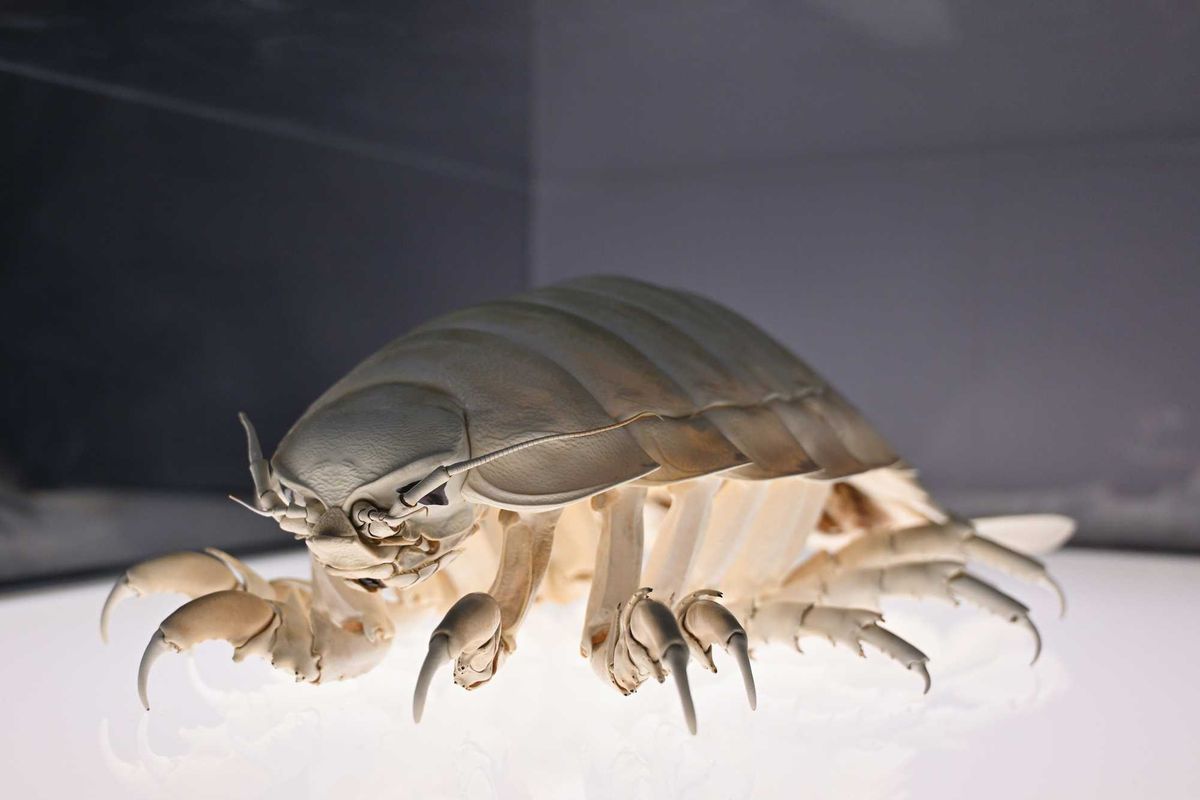Meet the kind bus driver who watched over a boy with Down syndrome for a decade.
In the already unpredictable world of public schools, the school bus often serves as the ultimate harbinger of chaos.
Between the savage cliques and the general lack of adult supervision, it's basically "Lord of the Flies" on wheels.
And for the majority schools with ever-shrinking budgets and ever-shrinking staffs, it's the drivers of these buses who are assigned the unique responsibility of both containing that chaos and obeying the rules of the road.
Remember that family road trip you went on last fall? Or that time you had to shuttle half your kid's soccer team to practice? Try doing that with 30 kids every. single. day.
GIF from "Billy Madison."
But for Ty Coppola, a 19-year-old student from Fairport, New York, it was his bus driver who left a huge impression on him.
Ty has Down syndrome, and for the most part, communicates through nonverbal expressions. Like most of us, Ty relies on certain "constants" to help him get through the average day, a facet of his personality that his family tries to maintain as best as they can.
For the past 10 years, one of the biggest constants in Ty's life has been his bus driver, Scott Reynolds.
Photo from the Coppola family, used with permission.
A bus driver at the Fairport Central School District for the past 35 years, Scott quickly formed a bond of friendship with Ty, one of the 12 students on his daily route.
"We just hit it off," said Scot to WHAM in Rochester, New York. "He's a good kid."
The fist bumps and a how-do-you-dos that Scott shared with Ty often were a highlight of Ty's day, filling him with a positive mindset to bring into school.
"If I could ONLY show you a picture of how Ty’s face 'lights up' when we open the garage and he sees Scott open the doors of the bus every morning," described Ty's parents. "How he has a little extra 'spring' in his step when Scott says 'good morning, Ty' or 'what got into you today?'"
So when Ty's family found out that Scott would be retiring, they wanted to give him a truly unforgettable thank you.
On the eve of his retirement, the Coppola family presented Scott with a heartfelt letter thanking him for the profound influence he has had on their son's life.
"How can we explain that Scott has been so much more than 'just a bus driver' to Ty?" read the letter.
"He cheers him up, gets his day started positively every day, and ends it with a smile. He is like another dad, or at least a big brother to Ty. "
Ty's family went on to describe Scott as "irreplaceable" and someone who will hold "a special place in our hearts forever."
Ty and his family, used with permission.
If the recent PSA from CoorDown taught us anything, it's that Down syndrome is still a largely misunderstood affliction.
It is also one that acquires a unique and attentive support system, which Scott was willing to provide through simple kindness from the very first day that he picked Ty up.
"Ty has known Scott for many years," the letter read. "I think Scott can 'read him' as well as we can at times."
"It is not always the people with a big title or position of influence that make a difference in the lives of kids with disabilities. It is often those that provide direct care for them and spend time with them every day that make the biggest difference. Scott has been one of those people that care. Really care. I am so impressed by people like Scott. "
According to School Transportation News, Scott is still finding semi-employment as an AAA driving instructor, but he is eyeing retirement to help watch over his aging parents.
Ty, meanwhile, has a new driver now and continues to study at the School of the Holy Childhood.
The takeaway here is a simple one: BE NICER TO YOUR BUS DRIVERS (but also, pay it forward).
One of the amazing things about this whole human experiment is that we all possess the capabilities to almost effortlessly cause a positive change in our environment. It's the most immediately gratifying concept there is, next to Dippin' Dots, and one of the defining characteristics of what makes our species great.
But mainly, be nicer to your bus drivers.
Tell your children that their territorial spitball wars can wait until recess. Or at least lunch.
Your driver will thank you for it.
GIF from "Billy Madison."




 First Lady Jacqueline Kennedy greets guests before a reception for the Wives of American Society of Newspaper Editors Members.via
First Lady Jacqueline Kennedy greets guests before a reception for the Wives of American Society of Newspaper Editors Members.via  A gorilla walking on its knuckles. via
A gorilla walking on its knuckles. via 
 Meatloaf was a staple dinner.
Meatloaf was a staple dinner. Spaghetti is still a classic.
Spaghetti is still a classic. Why were pork chops so popular?
Why were pork chops so popular?
 Cooking at home is almost always cheaper than eating out, and often significantly so.
Cooking at home is almost always cheaper than eating out, and often significantly so. Bulk spices often cost a fraction of what they cost in jars.
Bulk spices often cost a fraction of what they cost in jars. Growing your own food can save you money.
Growing your own food can save you money. Biking is free.
Biking is free. Public libraries are treasure troves of free items to borrow.
Public libraries are treasure troves of free items to borrow.
 A person in gloves inspecting for bed bugs.
A person in gloves inspecting for bed bugs.